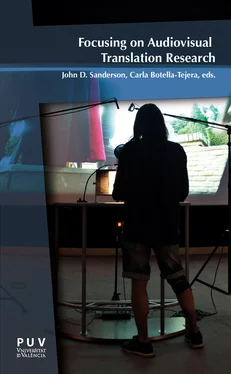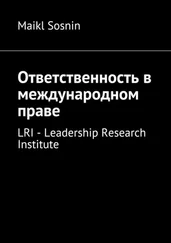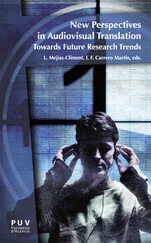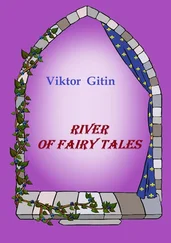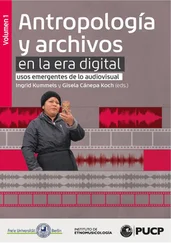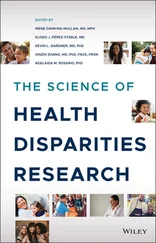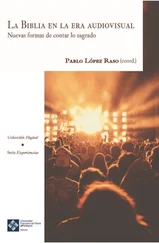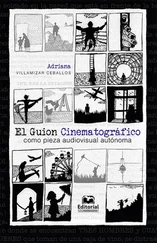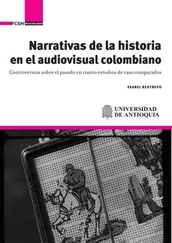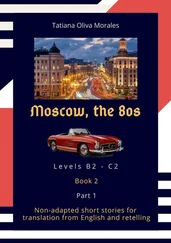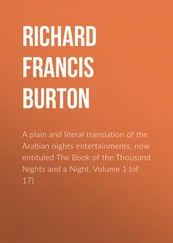AAVV - Focusing on Audiovisual Translation Research
Здесь есть возможность читать онлайн «AAVV - Focusing on Audiovisual Translation Research» — ознакомительный отрывок электронной книги совершенно бесплатно, а после прочтения отрывка купить полную версию. В некоторых случаях можно слушать аудио, скачать через торрент в формате fb2 и присутствует краткое содержание. Жанр: unrecognised, на английском языке. Описание произведения, (предисловие) а так же отзывы посетителей доступны на портале библиотеки ЛибКат.
- Название:Focusing on Audiovisual Translation Research
- Автор:
- Жанр:
- Год:неизвестен
- ISBN:нет данных
- Рейтинг книги:4 / 5. Голосов: 1
-
Избранное:Добавить в избранное
- Отзывы:
-
Ваша оценка:
- 80
- 1
- 2
- 3
- 4
- 5
Focusing on Audiovisual Translation Research: краткое содержание, описание и аннотация
Предлагаем к чтению аннотацию, описание, краткое содержание или предисловие (зависит от того, что написал сам автор книги «Focusing on Audiovisual Translation Research»). Если вы не нашли необходимую информацию о книге — напишите в комментариях, мы постараемся отыскать её.
Focusing on Audiovisual Translation Research — читать онлайн ознакомительный отрывок
Ниже представлен текст книги, разбитый по страницам. Система сохранения места последней прочитанной страницы, позволяет с удобством читать онлайн бесплатно книгу «Focusing on Audiovisual Translation Research», без необходимости каждый раз заново искать на чём Вы остановились. Поставьте закладку, и сможете в любой момент перейти на страницу, на которой закончили чтение.
Интервал:
Закладка:
In addition, both groups followed the contents included in the course syllabus, and every term they submitted an English composition to be assessed according to the rubric shown below.
TABLE 1
Writing production assessment rubric

Grammar: the student is able to produce grammatically correct structures.
Vocabulary: there is a variety of different vocabulary used throughout the composition.
Syntax: word order is followed based on English and idiomatic structures.
Cohesion: the student is able to present connected ideas, developing and supporting arguments.
The purpose of including the assessment criteria was an attempt to assess the compositions in more precise and accurate terms. All the students had to write an assessed composition in English (some 70-80 words) every term on the following topics:
• 1st term: What type of clothes do you like wearing? Write a description of the clothes you wear during the week, at weekends and on special occasions.
• 2nd term: Write an informal e-mail inviting your friends to your house for your birthday party. Tell them that they can bring some friends over and that there’s no need to bring any food or drinks.
• 3rd term: Today, more and more people are used to being connected to their smartphones at all times. Can youngsters and adults become addicted to them? Support your argument either in favour or against this statement.
The activities involved in the experiment were organised over the three terms and took place in a secondary school in Madrid. These can be seen in table 2.
TABLE 2
Tasks and subtitling sessions
| Time line | Tasks | Subtitling sessions |
| 1st term (September-November 2015) | 1st composition | • 16 October 2015 subtitling conventions• 23 October 2015 pre-study questionnaire• 5 November 2015 Amara (tutorials)• 27 November 2015 Amara (tutorials) |
| 2nd term (December-March 2015-2016) | 2nd composition | • 4 December 2015 subtitling practice• 15 January 2016 subtitling practice• 5 February 2016 subtitling practice• 11 March 2016 subtitling practice |
| 3rd term (April-June 2016) | 3rd composition | • 8 April 2016 subtitling practice• 5 May 2016 subtitling practice• 20 May 2016 subtitling practice• 11 March 2016 subtitling practice / post-study questionnaire |
As shown in table 2, during the first term, the first classes were used to provide the students with some general insights into subtitling conventions (Talaván, Ávila-Cabrera and Costal 2016), although no professional subtitles were expected of them. Although the students were told that a number of active subtitling activities were going to take place in order to improve their level of written English, no comprehensive instructions were given on the linguistic direction used to subtitle the videos or topics, which they could choose themselves by using Amara. It is worth noting here that, in order to improve the students’ written English skills, the audio should be in Spanish and the subtitles in English, although, in fact, their oral skills would also benefit from subtitling English to Spanish. All the students were organised in groups of two or three and instructed to subtitle at least one video by the end of the course. Some tutorials were also given on the use of Amara to familiarise the students with the platform. After all these preliminary steps, the subtitling sessions took place. Both the control and experimental groups had three hours of English per week, but in the case of the latter, an hour dedicated to tutorials was used so that there was no interference with regard to the number of regular tuition hours in English for both groups.
Regarding qualitative data, the students filled in a pre-study questionnaire 1containing general questions using Google forms. At the end of the project, a post-study questionnaire 2was also given to the students containing a number of questions on the project in order to assess learning outcomes, difficulties encountered and the like.
Amara was chosen as the subtitling platform because it is a user-friendly tool as well as to make the students aware of the ways in which social subtitling (Talaván and Ávila-Cabrera 2016, 2017) can benefit a myriad of users independently of their language proficiency. All the tools described above were used to implement this project.
4 Data analysis and discussion
As this study follows a multi-strategy design (Robson and McCartan 2016), the triangulation of data is relevant so that quantitative data can be examined and then compared with qualitative data either to corroborate or refute the findings obtained, addressing the research questions outlined at the beginning of the paper scientifically:
• Is active subtitling a useful tool for teenage students’ written English (as an L2)?
• Are subtitling tasks entertaining and useful for the purposes of L2 learning in the case of teenagers?
Both these questions are answered once all the results have been obtained in the following sections where information on the questionnaires and the assessments written in English are analysed and discussed.
4.1. PRE-STUDY QUESTIONNAIRE
As far as the population is concerned, it was not chosen at random, so we are dealing with a quasi-experimental study, in which the control group was composed of 21 students and the experimental group had 31 out of which 27 students filled in the pre-study questionnaire, indicating that they had signed up for the project. They were mostly aged between 13 and 16; all students were Spanish (96.3%) with the exception of one student from the Dominican Republic (3.7%), and 48.1% were male and 51.9% female. As regards official English certificates, 88% had no level of certification in the English language at all.
In terms of their English oral and written skills, the students seemed to think they were mostly intermediate and upper-intermediate (57.7%) as they indicated in the pre-study questionnaire. However, this did not seem to correspond with the results obtained by most of them after they had taken some course tests. When they were asked about their written English skills, most students (66.6%) also indicated that they were intermediate and upper-intermediate. These data might also indicate that they did not actually have a thorough knowledge of the linguistic competences required at each level of the CEFRL.
They seemed to be very familiar with audiovisual materials as, indeed, the survey would indicate: 92.6% said that they relied on the support of audiovisual materials – in class (26.9%). Among these materials some corresponded to films (26.9%), TV series (11.5%), DVDs from course books (57.7%) and others (3.8%). Two questions dealt with subtitling and, in the case of intralingual subtitles (both audio and subtitles in English), 25.9% said they had never used them, 40.7% hardly ever, 14.8% sometimes and, finally, 18.5% said that they had used them often and always. Interlingual subtitles (audio in English and subtitles in Spanish) were more familiar to them, with only 37% admitting that they had never used them, 33.4% hardly ever, 14.8% sometimes, and 14.8% often and always. We can therefore infer that intralingual subtitles were more familiar to them with about 33.3% using them as against interlingual subtitles where the figure was 29.6%. This seemed to be a more common result among advanced learners, and did not seem to apply to some students whose marks and abilities in English language were poor. Concerning the various AVT modes available, while 37% said that they preferred audiovisual programmes dubbed into Spanish, 40.7% opted for subtitled programmes in their native tongue, 18.5% preferred subtitles in the original language and only 1% preferred programmes in the original version without subtitles.
Читать дальшеИнтервал:
Закладка:
Похожие книги на «Focusing on Audiovisual Translation Research»
Представляем Вашему вниманию похожие книги на «Focusing on Audiovisual Translation Research» списком для выбора. Мы отобрали схожую по названию и смыслу литературу в надежде предоставить читателям больше вариантов отыскать новые, интересные, ещё непрочитанные произведения.
Обсуждение, отзывы о книге «Focusing on Audiovisual Translation Research» и просто собственные мнения читателей. Оставьте ваши комментарии, напишите, что Вы думаете о произведении, его смысле или главных героях. Укажите что конкретно понравилось, а что нет, и почему Вы так считаете.
